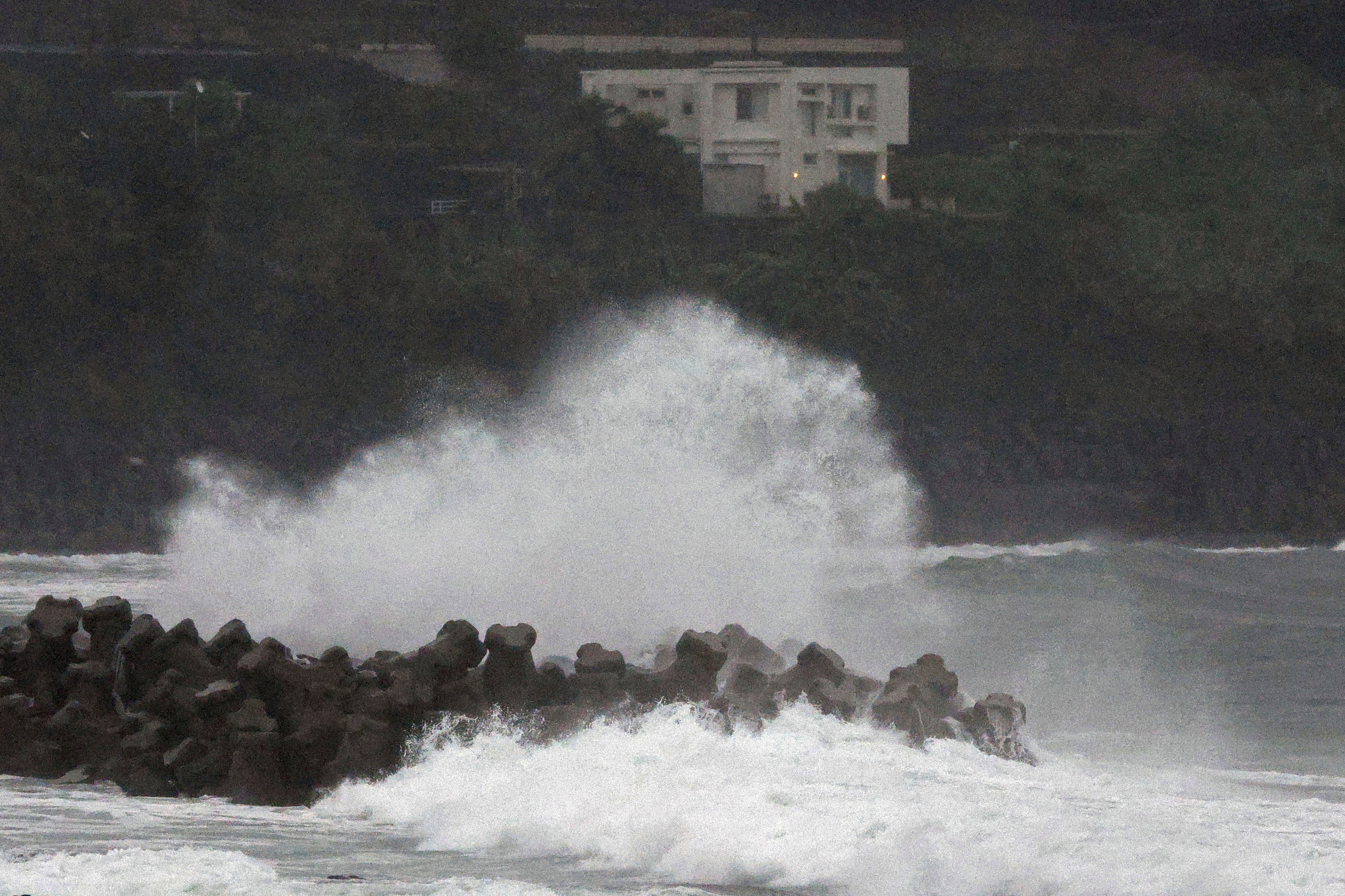Flights cancelled and factories closed as Typhoon Shanshan approaches Japan
Forecast shows over 23 inches of rain set to lash Japan

Your support helps us to tell the story
From reproductive rights to climate change to Big Tech, The Independent is on the ground when the story is developing. Whether it's investigating the financials of Elon Musk's pro-Trump PAC or producing our latest documentary, 'The A Word', which shines a light on the American women fighting for reproductive rights, we know how important it is to parse out the facts from the messaging.
At such a critical moment in US history, we need reporters on the ground. Your donation allows us to keep sending journalists to speak to both sides of the story.
The Independent is trusted by Americans across the entire political spectrum. And unlike many other quality news outlets, we choose not to lock Americans out of our reporting and analysis with paywalls. We believe quality journalism should be available to everyone, paid for by those who can afford it.
Your support makes all the difference.Japan is on high alert as powerful Typhoon Shanshan edges closer, with high waves and wind prompting flight cancellations, train suspensions, and factory shutdowns.
The storm is expected to hit southern Kyushu on Thursday, with winds reaching up to 155mph (250kph) at its centre, strong enough to topple houses.
On Wednesday, the storm was 70km south-southwest of Yakushima Island, moving slowly northward off the country’s southwest coast, bringing extreme winds and heavy rain.
The Japan Meteorological Agency (JMA) has issued emergency warnings for storms and high waves in Kagoshima Prefecture, excluding the Amami region, as the typhoon threatens flooding and landslides.
The agency has issued a rain forecast of up to 23.6in (600mm) over the next 24 hours.
No damage or injuries have been reported so far but two people were rescued in Aichi Prefecture in central Japan on Wednesday morning after a landslide struck their home, the public broadcaster NHK reported. Two other residents have also been rescued.
As the typhoon approached, dozens of domestic flights were cancelled.
Japan Airlines announced the cancellation of some Wednesday flights scheduled to arrive or depart from airports in central Japan, including Osaka Kansai Airport, one of the country’s largest.
All Nippon Airways, Japan's largest airline, said that the storm is expected to impact flights at Osaka airport.
Japan’s high-speed rail network, the Shinkansen, began canceling some services on Tuesday, with further cancellations anticipated on Wednesday and Thursday, according to its operators.
Japan Railway has announced that most bullet trains and local services on Kyushu will be suspended. Similar steps may be taken on the main island of Honshu until Sunday.
Postal and delivery services in the region have been halted, and many stores are planning to close early.
The JMA has warned that the risk of disaster could increase suddenly as the storm progresses.
Officials urged residents, especially older adults, to take shelter immediately if they feel unsafe.
“To protect your life and the lives of your loved ones, please flee to evacuation areas specified by local authorities and secure your safety,” said Satoshi Sugimoto, an official at the weather agency, speaking at a news conference on Wednesday afternoon.
A Level 5 emergency warning – the highest and rarely issued – has been declared for Mishima village in Kagoshima Prefecture, which has 369 residents across 202 households. The alert refers to an imminent life-threatening situation and urges residents to take immediate protective actions, even if safe evacuation is no longer possible.
Level 4 evacuation orders have also been issued in parts of Kagoshima, Miyazaki, Aichi, and Shizuoka. This includes 27 cities in Kagoshima Prefecture and the entire city of Miyazaki, which has a population of over 400,000.
The government has also cancelled its annual earthquake drills to ensure disaster response resources are available for the typhoon.
Localized heavy rain is also impacting other regions of Japan, including the Tokai region, where rain is intensifying as warm, moist air flows in.
The city of Shinshiro in Aichi Prefecture has already recorded about 12in (304.5mm) of rain in 48 hours, the highest for August since record-keeping began in 2003.
Join our commenting forum
Join thought-provoking conversations, follow other Independent readers and see their replies
Comments